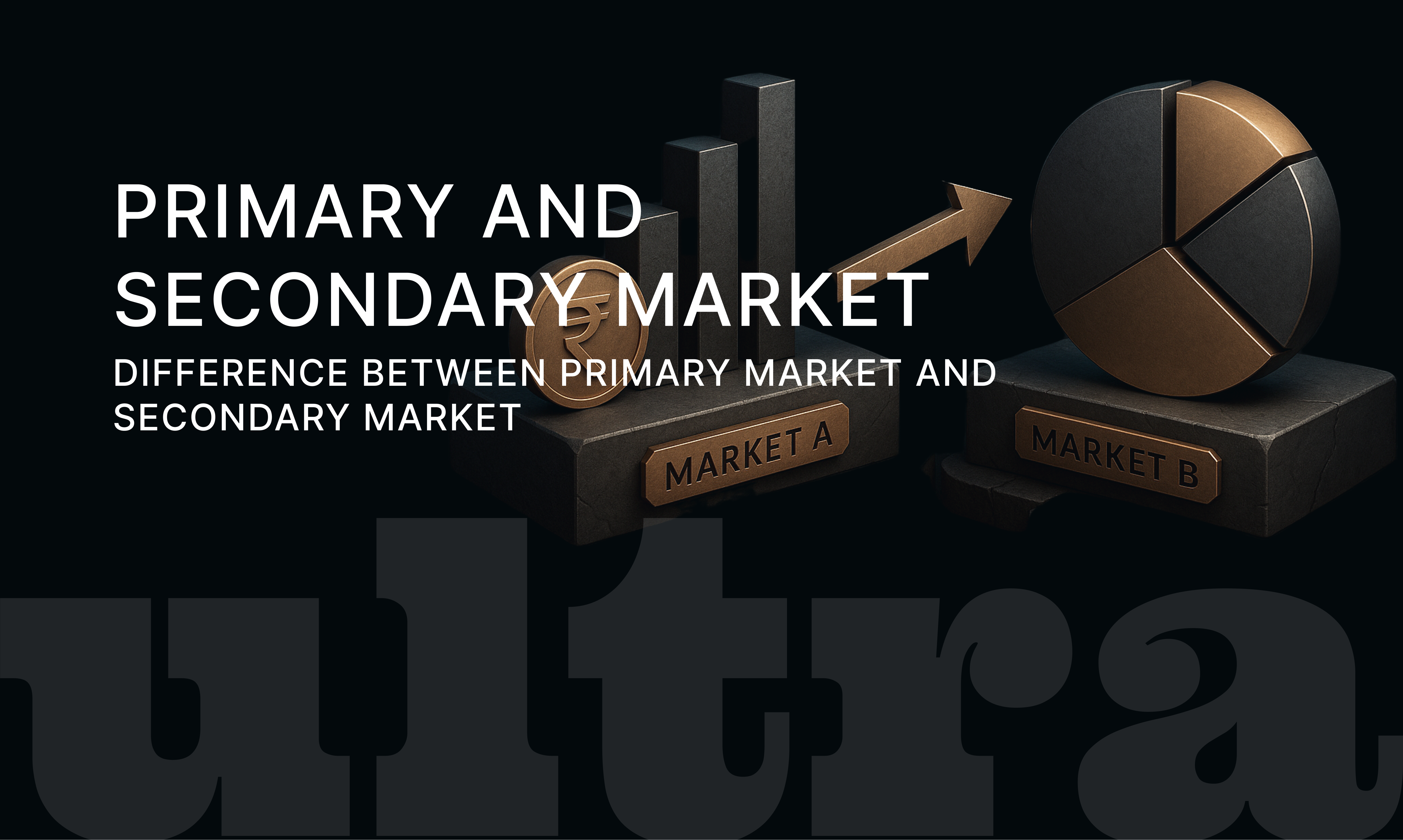Difference Between Primary Market and Secondary Market: Complete Guide
16 July 2025 · Sachin Gadekar
Learn What is Primary Market and Secondary Market with Key Differences

What is Primary Market?
In the world of investing, you will often come across the terms primary market and secondary market. Both are pillars of the capital market, but they serve different purposes for companies and investors. This guide by Ultra explains what the primary and secondary markets are, how they work, and the key differences between them.
What is Primary Market?
The primary market, also called the new issue market, is where companies issue new securities to raise fresh capital. Companies looking to expand their operations, launch new projects, or repay debt use the primary market to sell shares, debentures, or bonds for the first time to the public through an Initial Public Offering (IPO).
Key Features of Primary Market
Deals with new securities issued for the first time.
The issuing company directly receives the funds.
Investors buy shares or bonds directly from the company.
The main objective is capital formation.
Activities involve underwriters and merchant bankers.
Example: When Smartworks Coworking launched its IPO recently, it raised money through the primary market.
What is Secondary Market?
The secondary market is where existing securities are bought and sold among investors. This is commonly referred to as the stock market or share market. Here, investors trade shares, bonds, or debentures that were originally issued in the primary market.
Key Features of Secondary Market
Deals with pre-issued securities.
The company does not receive any funds from these trades.
Provides liquidity and an exit route for investors.
Trading happens on stock exchanges like NSE and BSE.
Prices fluctuate based on demand and supply.
Example: When you buy Tata Motors shares from another investor through the NSE, you are trading in the secondary market.
Primary Market vs Secondary Market: Key Differences
| Basis | Primary Market | Secondary Market |
|---|---|---|
| Meaning | New securities are issued | Existing securities are traded |
| Transaction Parties | Company and investors | Investor to investor |
| Purpose | To raise fresh capital | To provide liquidity |
| Price | Fixed by the company | Determined by market forces |
| Intermediaries | Merchant bankers, underwriters | Brokers, stock exchanges |
| Frequency | Securities sold once | Securities traded multiple times |
| Example | IPO | NSE, BSE transactions |
Benefits
How Do Primary and Secondary Markets Work Together?
The primary market raises funds for businesses, while the secondary market provides liquidity by allowing investors to buy and sell these securities freely. The secondary market’s performance often influences investor sentiment toward new issues in the primary market. Without a strong secondary market, the primary market would struggle to attract investors due to a lack of exit options.
Benefits of Primary Market
Enables companies to raise significant capital.
Promotes industrial and economic growth.
Involves public participation in ownership.
Regulated by SEBI to protect investor interests.
Benefits of Secondary Market
Provides liquidity to investors.
Helps in price discovery through continuous trading.
Encourages investment in IPOs and new issues.
Facilitates portfolio diversification.
Types of Issues in Primary Market
Public Issue (IPO/FPO): Open to the general public.
Rights Issue: Offered to existing shareholders.
Private Placement: Offered to select investors.
Preferential Allotment: Issued to specific investors at a pre-determined price.
How to Invest in Primary and Secondary Markets
Primary Market:
Apply for IPOs through ASBA facility via banks or brokers.
Submit applications during the subscription period.
Secondary Market:
Open a Demat and Trading account with a broker.
Place buy or sell orders through a stock exchange.
Trade shares, bonds, or other securities.
Risks in Primary and Secondary Markets
| Risk | Primary Market | Secondary Market |
|---|---|---|
| Price Risk | Low, price is fixed | High, price depends on market movements |
| Liquidity Risk | High if IPO listing is delayed | Low due to active trading |
| Information Risk | Risk of inadequate disclosures | Companies provide regular disclosures |
FAQs on Primary and Secondary Market
Q1: What is the primary market?
The primary market is where companies raise capital by issuing new securities to investors for the first time.
Q2: What is the secondary market?
The secondary market is where investors buy and sell securities that were initially issued in the primary market.
Q3: What is the main difference between primary and secondary market?
The primary market deals with new securities; the secondary market deals with existing ones.
Q4: Who regulates these markets?
Both markets are regulated by SEBI (Securities and Exchange Board of India).
Q5: Can I invest in both markets?
Yes, you can participate in IPOs through the primary market and trade securities on stock exchanges in the secondary market.